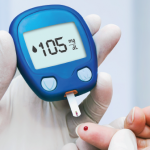NEW YORK (Reuters Health)—Screening for celiac disease (CD) is important in patients newly diagnosed with type 1 diabetes (T1D) and in children presenting for rheumatology evaluation, according to a pair of new reports.
In a systematic review, online June 15 in Pediatrics, Australian researchers found most cases of CD are diagnosed within five years of T1D diagnosis; therefore, screening should be considered at T1D diagnosis and within two and five years thereafter, they advise.
Dr. Maria Craig from the Institute of Endocrinology and Diabetes, The Children’s Hospital of Westmead, New South Wales, and colleagues note that the association between T1D and CD is well documented in young people, although reported rates vary from about 2% to 16%. And screening guidelines are “variable and not evidence based.”
They reviewed nine longitudinal cohort studies involving 11,157 children and adolescents with T1D, of whom 587 had biopsy-proven CD. The prevalence of CD varied from 1.6% to 9.7%, with a weighted pooled prevalence of 5.1%.
After excluding 41 individuals who developed CD before T1D, CD was diagnosed in 40% of patients within one year of T1D diagnosis, in 55% within two years of diagnosis and in 79% within five years, “indicating that the risk of CD is highest within the first year of diabetes duration.”
Based on this, screening should be considered at diabetes diagnosis and within two and five years after diagnosis, they conclude.
The optimal screening frequency beyond five years of diabetes duration is unknown, due to limited evidence from long-term studies, they note. However, among the studies with longer follow-up, 16% of CD cases were diagnosed between five and 10 years of diabetes duration and 5% were diagnosed after more than 10 years.
“CD should be considered at any time in patients with symptoms suggestive of CD,” the authors add.
A related report in Pediatrics, also online June 15, suggests that children presenting for rheumatology evaluation should also be screened for CD.
“Current clinical guidelines do not consider patients with rheumatic conditions to be at high risk for CD despite numerous reported associations between the two in adults and children,” the authors note.
But in their study of 2,125 patients presenting for initial evaluation at the pediatric rheumatology division at the Hospital for Special Surgery in New York, 36 received a diagnosis of CD based on serologic testing and evaluation by a pediatric gastroenterologist.
“We found an unexpectedly high number of previously unrecognized CD cases compared with the general population (2.0% vs 0.7%),” Dr. Thomas Lehman and colleagues note in their article.

